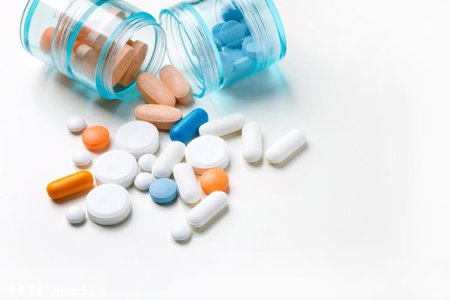扫一扫 添加小助手
服务热线
13818320332
扫一扫 关注我们
 12月4日,世界卫生组织(WHO)于发布《药品生产技术转移指南》(WHO guidelines on the transfer of technology in pharmaceutical manufacturing),提供了药品技术转让期间应考虑的指导原则。
12月4日,世界卫生组织(WHO)于发布《药品生产技术转移指南》(WHO guidelines on the transfer of technology in pharmaceutical manufacturing),提供了药品技术转让期间应考虑的指导原则。
该文件目前正处于收集意见期,截止日期为2021年2月。此后,将于2021年2-3月份提交专家工作组,进行讨论,完善后进行第2轮意见收集。最终修订稿计划于2021年10月份,提交第56药物制剂专家委员会(ECSPP)。

本指南主体部分分为12个章节,内容如下:
背景
1.简介
2.范围
3.术语
4.尽职调查和差距评估
5.组织与管理
6.质量管理和质量风险管理
7.文件
8.设施
9.设备和仪器
10.确认和验证
11.产品生命周期和项目管理原则
12.技术转移项目的阶段
以下是该指南的概述部分(背景、简介和范围)的内容:
Background 背景
During the Fifty-fifth World Health Organization (WHO) Expert Committee on Specifications for Pharmaceutical Preparations (ECSPP) meeting, Expert Committee members were updated on the annual consultation of Good Practices for Health Products and Inspection which took place in July 2020 in a series of virtual meetings due to the COVID-19 pandemic. During these virtual meetings, a group of experts made a series of proposals for future activities, one of which was how to determine whether or not the WHO guidelines on the transfer of technology in pharmaceutical manufacturing (1) should also be updated. This document was published in 2011 and it was considered that it should require updating, not least to support the inspections for COVID-19 therapeutics.
在第55届WHO药物制剂质量标准专家委员会(ECSPP)会议上,专家委员会成员听取了健康产品和检查良好实践年度咨询的最新信息,由于COVID-19大流行,这些系列会议于2020年7月以远程会议形式召开。会议期间,一些专家为未来的活动提出了一系列建议,其中之一是确定是否应更新WHO药品生产技术转移指南。该文件于2011年发布,被认为应该进行更新,尤其是为了支持对COVID-19治疗用品的检查。
The Expert Committee asked the WHO Secretariat to explore this proposal.
专家委员会请世卫组织秘书处探讨这一建议。
1. Introduction 简介
1.1. Production and control procedures, validation and other related activities may be transferred from one site to another site prior to obtaining a marketing authorization. In some cases, this transfer takes place after the approval of, for example, a product, by a regulatory authority. This transfer can be, for example, from drug discovery to product development; to clinical trials; or to full-scale commercialization and commercial batch manufacturing; cleaning and validation.
在获得上市许可之前,生产和控制程序、验证以及其它相关活动可以从一个场所转移到另一场所。在某些情况下,这种转移是在监管机构批准产品后进行的。这种转移可以是从药物发现到产品开发、再到进行临床试验;或是全面商业化和商业批生产、清洁和验证。
1.2. A technology transfer, particularly one between different companies, has legal and economic implications. If such issues, which may include intellectual property rights, royalties, pricing, conflicts of interest and confidentiality agreements, are expected to impact on the open communication of technical matters in any way, they should therefore be addressed before and during the planning and execution of the transfer.
技术转移,尤其是不同公司之间的技术转移,具有法律和经济内涵。如果此类问题(包括知识产权、特许权使用费、定价、利益冲突和保密协议)可能会影响技术方面的开放沟通,则应在计划和执行转移之前和过程中加以解决。
1.3. A technology transfer requires a planned approach by trained, knowledgeable personnel working within a quality system, with documentation, data and information covering all aspects of development, production and quality control (QC), as applicable.
技术转移要求采用计划性的方法,由具备丰富知识并在质量体系内工作的人员进行规划,其文档、数据和信息涵盖开发、生产和质量控制(QC)各个方面(如适用)。
1.4. A technology transfer takes place between a sending unit (SU) and a receiving unit (RU). In some cases, there may be a separate unit managing the project.
在转移方(SU)和接收方(RU)之间进行技术转移。在某些情况下,可能会有一个单独的部门来管理项目。
1.5. The technology transfer project should fulfil the following general principles and requirements. There should be:
技术转移项目应满足以下一般原则和要求。应该有:
• a documented project plan covering the relevant aspects of the project;
•涵盖项目相关方面的文件化项目计划;
• a detailed risk management plan;
•详细的风险管理计划;
• a comprehensive technical gap analysis, including due diligence performed covering technical and regulatory aspects;
•全面的技术差距分析,包括涵盖技术和法规方面的尽职调查;
• similar capabilities between the SU and RU, including but not limited to, facilities and equipment;
•SU和RU之间具有类似的能力,包括但不限于设施和设备;
• an adequate number of adequately trained personnel with suitable qualifications and experience; and
•有足够的经过适当培训的人员,具有适当资质和经验;
• effective process and product knowledge management.
•有效的工艺和产品知识管理。
1.6 A technology transfer should include relevant documentation, data, information and knowledge from the SU in order to enable the RU to effectively perform the specified process or procedure in, for example, production and QC. A successful transfer of technology should result in proof that the RU can routinely reproduce the transferred product, process or procedure against a predefined set of specifications as agreed between the SU and RU.
技术转移应包括来自SU的相关文档、数据、信息和知识,以使RU能够有效执行指定的工艺或程序,例如在生产和质量控制中。成功的技术转移应证明:按照SU和RU之间预先商定的标准,RU可以常规化重现所转让的产品、工艺或程序。
1.7 This document should be read in conjunction with other WHO guidelines as referenced below (2-14), as well as other regulatory guidelines which include The International Council for Harmonisation of Technical Requirements for Pharmaceuticals for Human Use (ICH) Q7, Q8, Q9, Q10 and Q11. This guideline does not intend to replace any of these guidelines.
应当结合参考文献(2-14)引用的其它WHO指南以及其它法规指南,一起阅读本文档,其中包括ICH Q7,Q8,Q9, Q10和Q11。本指南无意取代这些指南。
1.8 This version of the guideline provides updated requirements and expectations reflecting current good practices (GxP) in the transfer of technology and replaces the previous version published (1).
该指南版本提供了更新的要求和期望,反映了技术转移中的当前良好实践(GxP),并替代了先前发布的版本。
2. Scope 范围
2.1 This document provides guiding principles on technology transfer.
本文档提供了有关技术转移的指导原则。
2.2 This guideline should be applied when transferring the technology of processes and procedures relating to active pharmaceutical ingredients (APIs), in-process bulk materials, finished pharmaceutical products (FPPs), process validation, cleaning procedure development and validation and analytical procedures.
本指南应用于以下相关的工艺和方法技术转移:活性药物成分(API)、中间体、制剂成品(FPP)、工艺验证、清洁程序开发和验证,以及分析程序。
2.3 The guideline applies to all pharmaceutical dosage forms and may be adapted on a case-by- case basis by using risk management principles. Particular attention should be given to certain complex formulations such as, for example, sterile products and metered dose aerosols.
该指南适用于所有药物剂型,并可通过使用风险管理原则,根据具体情况进行调整。应特别注意某些复杂的制剂,例如无菌产品和定量喷雾剂。
2.4. Although this document focuses on pharmaceutical products, the principles can also be applied to the transfer of production, related processes and controls for other products such as biopharmaceutical products, vaccines, medical devices and vector control products.
尽管本文档的重点是药品,但是这些原则也可以应用于其它产品的生产、相关工艺和控制转移,这些产品如生物制品、疫苗、医疗器械和载体控制产品。
2.5. Because each transfer project is unique, the provision of a comprehensive set of guidelines specific to a product or process is beyond the scope of this document.
由于每个转移项目都是唯一的,因此针对产品或工艺提供的全面指导超出了本文档的范围。
2.6. This document does not provide guidance on any legal, financial or commercial considerations associated with technology transfer projects.
就与技术转移项目相关的任何法律、财务或商业考虑,本文档不提供指导。
2.7. This document addresses the following principal areas:
本文档涉及以下主要领域:
• organization and management of the transfer;
•转让的组织和管理;
• transfer of development information in production, including but not limited to processing and packaging;
•生产开发信息的转移,包括但不限于工艺和包装;
• transfer of development information and analytical procedures;
•开发信息和分析程序的转移;
• documentation, premises, equipment;
•文件、设施、设备;
• personnel qualification and training;
•人员资质和培训;
• quality management and risk management;
•质量管理和风险管理;
•life cycle approach;
•生命周期方法;
• control strategy; and
•控制策略;
• qualification and validation.
•确认和验证。
文章来源:PharmLink
本网站刊载的所有内容,包括文字、图片、音频、视频、软件等,如非标注为“原创”,则相关版权归原作者所有,如原作者不愿意在本网站刊登相关内容,请及时通知本站,我们将第一时间予以删除。